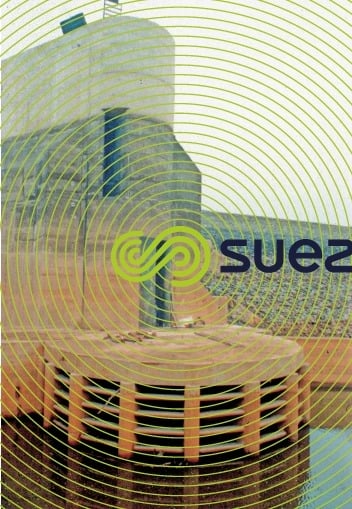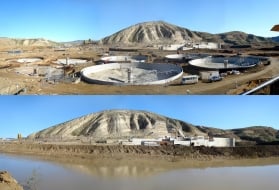water intake
Reading time:A properly designed water intake is the cornerstone of effective water treatment.
When groundwater is involved, the first concern will be to design an intake or pumping system that draws in the least possible amount of soil and sand with the water. The definition of a sufficiently sizeable protection zone is also essential (refer to any applicable legislation in the country concerned).
In the case of river water, the intake must be adapted to the various elements that the water source may contain and, depending on the case, a decision will need to be reached on the necessary pre-treatment strategies to be carried out at the water intake location, especially when this point is remote from the actual treatment plant.
water intake design
In a lake having a virtually constant level, the height of the water intake must be selected in such a way that the suspended solids, colloidal matter, iron or manganese, and plankton content remains as low as possible throughout the year.
As a general rule of thumb, if the lake is sufficiently deep it is advisable to extract water at a depth between 30 and 35 m from the surface; where the level of illumination is sufficiently weak to ensure a limited plankton content, especially during periods of major proliferation. However, the water intake must be at least 6 to 8 metres off the bottom in order to avoid the excessive impact of bottom currents and deposits.
Finally, one needs to allow for the possibility of lake water “overturning”, a phenomenon that occurs under the influence of temperature changes (creating circulation).
An intake installed on a variable level impounding reservoir systematically calls for the design of columns allowing water to be drawn off at different depths depending on the season. In fact, this approach is often recommended, even with constant level impounding reservoirs, when the water’s physical-chemical and/or biological profile varies with the seasons (photo 2).
A water intake from a river must incorporate protection against various waterborne matter including soil, sand, leaves, reeds, grasses, packaging waste, floating bodies, foam and hydrocarbon layers. There is no ideal type of intake but a range of different types will apply, adapted not only to river borne matter but also to the river’s geography, to the nature and profile of its banks, and also to navigation and access possibilities. This can result in bottom intakes, side intakes, siphon intakes, or even wells in the bank. Consequently, each case has to be investigated separately.



pre-treatment at the raw water intake
The first possible treatment is screening with the aim to remove large debris that could impede the implementation of subsequent treatment stages.
It may include (see chapter pre-treatments):
- bar-screening;
- macro-screening. This is an essential stepwhen the water contains grasses, leaves,plastic debris, etc. Cleaning must be carriedout automatically. When this stage has beenomitted to save cost, its absence has causedproblems for a large number of plants, especially when they include lift pumping;
- grit removal. Depending on the water intake conditions, this stage can be placedeither before or after the screening system.Grit removal is essential when followed by treatment technologies that are likely to be significantly affected by sizeable amounts of grit.
- surface oil removal;
- desludging. This is necessary when the amount of suspended solids (clay,silt, etc.) within the raw water exceeds the removal capacity of the downstream settling tanks (> a few g · L–1 suspended solids); the concept of dual sedimentation will be developed in "clarification".
When the water intake is remote from the treatment plant, particular attention must be paid to the protection of connecting pipelines for a number of reasons:
- water hammer protection;
- silting (sand, clay…);
- obstruction (mussels, iron depositing bacteria…);
- the development of unpleasant tastes (algae, OM, organic debris).
In such cases prechlorination is often recommended; however, a degree of caution is required because, despite its excellent effectiveness, chlorination is often accompanied by disadvantages such as the appearance of unpleasant tastes (e.g. chlorophenols with some algae) and especially the formation of disinfection byproducts such as trihalomethanes (THM) that subsequent treatments will find very difficult to remove.
Possible chlorine dosing strategies include intermittent “shock” treatment using high doses or continuous chlorination below the break-point dosage (see the section oxidation and reduction), when the raw water contains ammonium ions.
Bookmark tool
Click on the bookmark tool, highlight the last read paragraph to continue your reading later













